Identify woodland birds on the go
Keep our pocket-sized identification guide to hand on your next walk.
Buy yours now
Digital Content Manager
You’re more likely to hear an owl before you see it, but do you know how to identify owl calls?
The five UK owl species can be difficult to track down. Most of them are out and about when the rest of us are tucked up inside, they’re all incredibly well camouflaged, and some make their homes in remote reaches. Thankfully, our guide to owl calls should help you tell your tawny owl from your barn owl without even having to lay eyes on them.
A tawny owl call is the classic hooting we most associate with owls, but all isn't what it seems. The famous 'twit twoo' sound isn't made by one bird – it's made by two. A male and a female, to be exact.
The female tawny owl makes the sharp 'ke-wick' (twit) sound, while the male responds with a wavering 'hoo-hoo' (twoo). The male tawny owl uses his call to stake claim to his territory, while the female users hers as a contact call, dueting with the male or keeping in touch with her chicks.
Tawny owls call most on autumn evenings when pairs begin courting, ready for nesting as early as February.
Prime tawny owl habitat is broadleaved woodland, but you can also find them in churchyards, parks and towns with mature trees.
Audio: Dominic Garcia-Hall / xeno-canto.org
A barn owl call is a shrill screeching sound, which has earned the owl the nickname 'screech owl'.
The best time to hear barn owls calling is at the beginning of the spring breeding season, when males screech to attract females to nest. Females also produce contact calls to beg males for food.
Barn owls like hunting in scrubby grassland habitats in the open countryside and farmland, particularly at dawn and dusk.
Audio: Patrik Åberg / xeno-canto.org
A little owl call is a short, repetitive 'woop' or a sharper 'kiew kiew'. Both male and female little owls may also use a soft contact call.
During the breeding season – from April – when males advertise territories.
Little owls live in tree-rich farmland and pasture across England. You're most likely to spot them in the daytime, perched on tree branches or rocks, or flying to cover if startled.
Audio: Patrik Åberg / xeno-canto.org
The male long-eared owl uses a soft 'hoo' call, a little like blowing across the top of a milk bottle, to stake claim to his territory. The female's call is a higher pitched 'hoo'.
Displaying long-eared owls have been known to bring their wings together in flight, making a soft clapping sound.
This is perhaps the UK's most secretive owl and is rarely heard. You're most likely to hear one during the breeding season, in early spring.
Long-eared owls are seldom seen during daylight hours. They like roosting in thickets and dense trees in well-wooded countryside, and seem to prefer coniferous woodland and tall, scrubby habitats.
Audio: Peter Boesman / xeno-canto.org
The male short-eared owl has a 'song' that usually consists of 10 or more fast, repetitive hoots. It sometimes uses this during display flights lasting for up to an hour, coupled with bursts of wing clapping.
Both male and female short-eared owls also use other vocalisations, including hoarse screeches and harsh barks.
Short-eared owls breed in remote moorland areas, so the male's song is rarely heard. You may hear these owls calling to one another when gathered at winter hunting grounds.
Short-eared owl habitat includes rough grassland and open moors, where they breed on the ground. In winter, populations tend to move towards the coast, where you're more likely to spot them at marshes and sand dunes. They can often be seen hunting in the daytime, but mostly at dawn or dusk.
Audio: Simon Elliott / xeno-canto.org
Keep our pocket-sized identification guide to hand on your next walk.
Buy yours now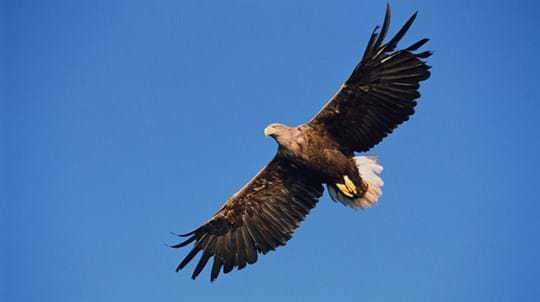
Blog
Amy Lewis • 10 Sep 2021
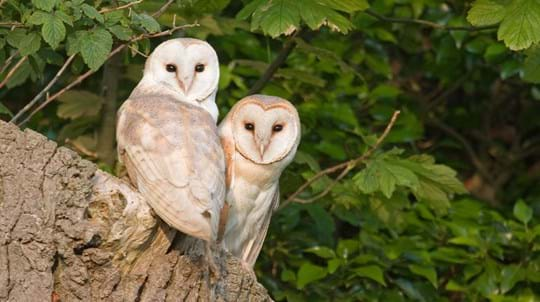
Blog
The Woodland Trust • 18 Jan 2019
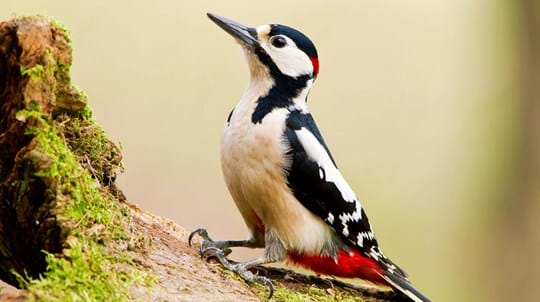
Blog
Amy Lewis • 30 Sep 2021

Blog
Kayleigh Jacobs-Rutter • 13 Feb 2024
Blog
Charlotte Varela • 10 Apr 2019
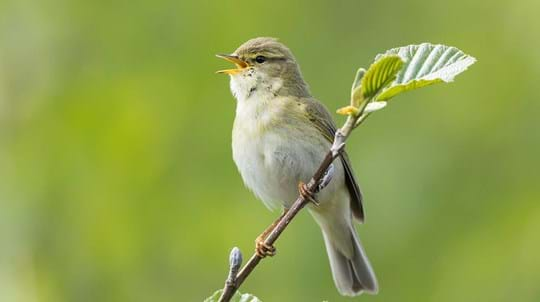
Blog
Amy Lewis • 11 Apr 2022
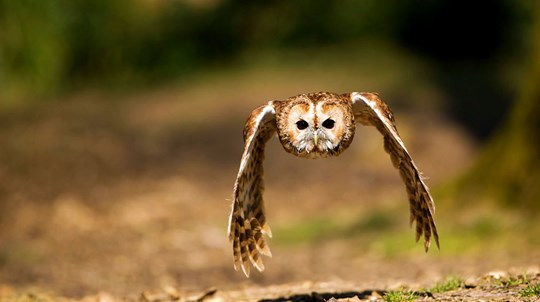
Trees woods and wildlife
Find out more about our declining woodland bird populations, and how protecting woodland habitats is more important than ever.